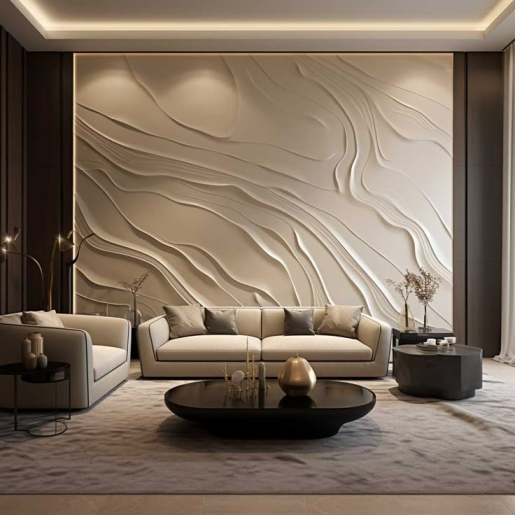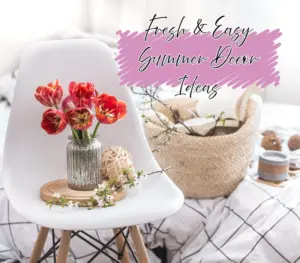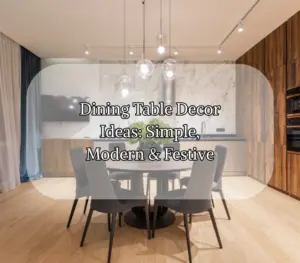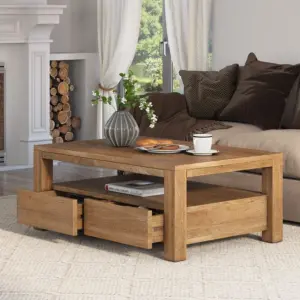
Textures in home decor can elevate a space from ordinary to extraordinary, adding depth, warmth, and personality. Whether you’re redecorating a single room or revamping your entire home, understanding how to use textures effectively is key to creating a cohesive and inviting environment. At topdecoratoradvice.com, we believe textures are the secret ingredient to stylish interiors. This comprehensive guide explores how to incorporate textures in home decor, offering practical tips, creative ideas, and expert advice to help you craft a space that feels uniquely yours.
Why Textures Matter in Home Decor
Textures in home decor refer to the surface quality of materials—think smooth silk, rough jute, plush velvet, or sleek metal. They engage the senses, particularly touch and sight, making a room feel dynamic and layered. Unlike color or pattern, textures add a tactile dimension that can make a space feel cozy, luxurious, or even minimalist, depending on how they’re used.
Using textures in home decor allows you to:
- Create Visual Interest: A room with varied textures avoids looking flat or monotonous.
- Enhance Comfort: Soft textures like wool or cotton make spaces feel inviting.
- Define Style: Textures can lean rustic, modern, bohemian, or traditional, shaping the room’s aesthetic.
- Balance Design: Pairing rough and smooth textures creates harmony in a space.
Let’s dive into how you can master textures in home decor to transform your living spaces.
Read More: modern interior design for small apartments
1. Start with a Texture Inventory
Before adding new textures, assess what’s already in your space. Look at furniture, rugs, curtains, and accessories. Are they mostly smooth, like glass tables or leather sofas? Or do they lean toward rough, like woven baskets or wooden beams? Identifying your starting point helps you decide what textures to introduce for balance.
For example, a sleek, modern living room with glossy surfaces might benefit from a chunky knit throw or a shaggy rug to add warmth. Conversely, a rustic space with wood and stone could use polished metal accents to introduce sophistication. At topdecoratoradvice.com, we recommend mixing textures to avoid a one-note look.
2. Layer Textures for Depth
Layering is the cornerstone of using textures in home decor. Combine different materials to create a rich, inviting space. Here’s how to layer effectively:
- Textiles: Start with fabrics like rugs, cushions, and curtains. A wool rug paired with linen cushions and a velvet sofa creates a cozy yet refined look.
- Furniture: Mix materials like wood, metal, and upholstery. A wooden coffee table with a leather armchair and a glass side table adds variety.
- Accessories: Incorporate textured accents like ceramic vases, woven baskets, or metallic lamps to tie the room together.
For instance, in a bedroom, layer a plush duvet with a linen headboard, a knitted throw, and silk pillowcases. This mix of textures in home decor feels luxurious without overwhelming the space.
3. Choose Textures Based on Room Function
Different rooms call for different textures depending on their purpose. Here’s a breakdown:
- Living Room: This space is for relaxation and socializing, so prioritize comfort. Use soft textures like chenille sofas, fluffy rugs, and cotton curtains. Add a touch of contrast with a sleek wooden console or a metal-framed mirror.
- Bedroom: Focus on tranquility with calming textures like silk bedding, wool throws, and matte wood furniture. Avoid overly shiny or rough textures that might disrupt the serene vibe.
- Kitchen: Durability meets style here. Think smooth quartz countertops, ceramic tiles, and wooden cabinets. A woven runner can soften the space.
- Bathroom: Opt for water-resistant textures like glossy tiles, frosted glass, and fluffy cotton towels. A bamboo mat adds warmth underfoot.
By tailoring textures to each room’s function, you ensure both practicality and beauty in your home decor.
4. Balance Rough and Smooth Textures
A key principle of textures in home decor is balance. Pairing rough and smooth surfaces creates contrast that keeps a room visually engaging. For example:
- A polished marble countertop looks stunning against a rough brick backsplash.
- A smooth leather sofa pops when paired with a nubby wool cushion.
- A glossy ceramic vase stands out on a distressed wooden shelf.
Too many rough textures can make a space feel heavy, while too many smooth ones can feel sterile. Aim for a mix that feels harmonious. Visit topdecoratoradvice.com for inspiration on striking the perfect balance.
5. Use Textures to Highlight Focal Points
Textures can draw attention to key elements in a room. Want to showcase a statement piece, like a fireplace or an accent wall? Surround it with contrasting textures. For example:
- A smooth stone fireplace surround looks dramatic against a textured shiplap wall.
- A plush velvet chair in a reading nook stands out when paired with a woven jute rug.
In smaller spaces, use textures to create subtle focal points. A textured wallpaper behind a bed or a tactile headboard can define the room’s vibe without cluttering it.
6. Incorporate Natural Textures
Natural textures bring an organic feel to home decor, making spaces feel grounded and timeless. Materials like wood, stone, rattan, and linen are versatile and sustainable choices. Here are some ideas:
- Wood: Exposed beams, live-edge tables, or reclaimed wood shelves add warmth.
- Stone: Marble coasters, granite countertops, or pebble mosaics lend elegance.
- Rattan: Wicker chairs or baskets bring a bohemian charm.
- Linen: Curtains or upholstery in linen offer a breezy, relaxed vibe.
Natural textures in home decor work especially well in neutral palettes, letting their tactile qualities shine. They’re also a great way to connect indoor spaces with the outdoors.
7. Play with Scale and Proportion
When using textures in home decor, consider the scale of each element. Large pieces, like rugs or sofas, can handle bold textures like shag or herringbone weaves. Smaller items, like cushions or lampshades, work better with subtler textures to avoid overwhelming the space.
For example, a large living room can handle a chunky knit ottoman, while a small apartment might benefit from a smoother fabric with a delicate pattern. Proportion ensures textures enhance rather than dominate the room.
8. Experiment with Textured Walls
Walls are a canvas for textures in home decor. Beyond paint, consider these options:
- Wallpaper: Textured wallpapers with grasscloth or embossed patterns add sophistication.
- Paneling: Wood paneling or beadboard brings architectural interest.
- Plaster: Venetian plaster or textured paint creates a handcrafted look.
- Tile: Subway tiles or mosaic patterns add tactile appeal in kitchens and bathrooms.
A textured accent wall can transform a room without requiring a full overhaul. It’s a bold yet manageable way to introduce textures in home decor.
9. Mix Textures with Color and Pattern
Textures in home decor don’t exist in isolation—they interact with color and pattern. Here’s how to combine them:
- Monochromatic Schemes: Use varied textures in a single color family to add depth without clutter. For example, a gray room with a wool rug, silk curtains, and a leather sofa feels cohesive yet dynamic.
- Bold Patterns: Pair subtle textures with patterns to let the design shine. A geometric rug with a smooth cotton sofa keeps the focus on the pattern.
- Contrasting Colors: Use textures to soften bold color contrasts. A red velvet cushion on a teal chair feels balanced with a neutral jute rug.
Experimenting with these combinations creates a layered, professional look. Check out topdecoratoradvice.com for more ideas on blending textures with color.
10. Maintain and Update Textures
Textures in home decor require care to stay vibrant. Regular cleaning—vacuuming rugs, washing cushions, or polishing wood—keeps them looking fresh. Over time, update textures to reflect your evolving style. Swap out heavy wool throws for airy cotton ones in summer, or replace a sleek lamp with a woven shade for a new vibe.
More Info: 5starsstocks.com defense
Common Mistakes to Avoid
- Overloading Textures: Too many competing textures can feel chaotic. Stick to 3-5 per room.
- Ignoring Scale: A small room with oversized textures can feel cramped.
- Neglecting Maintenance: Dusty or worn textures lose their charm.
- Lack of Contrast: All-smooth or all-rough textures lack dynamism.
Conclusion
Mastering textures in home decor is about balance, creativity, and intention. By layering materials, balancing rough and smooth surfaces, and tailoring textures to each room’s function, you can create a space that’s both stylish and welcoming. Whether you’re drawn to natural woods, plush fabrics, or sleek metals, textures bring your home to life. For more inspiration, visit topdecoratoradvice.com to explore endless ways to use textures in home decor and craft a space that reflects your unique style.






